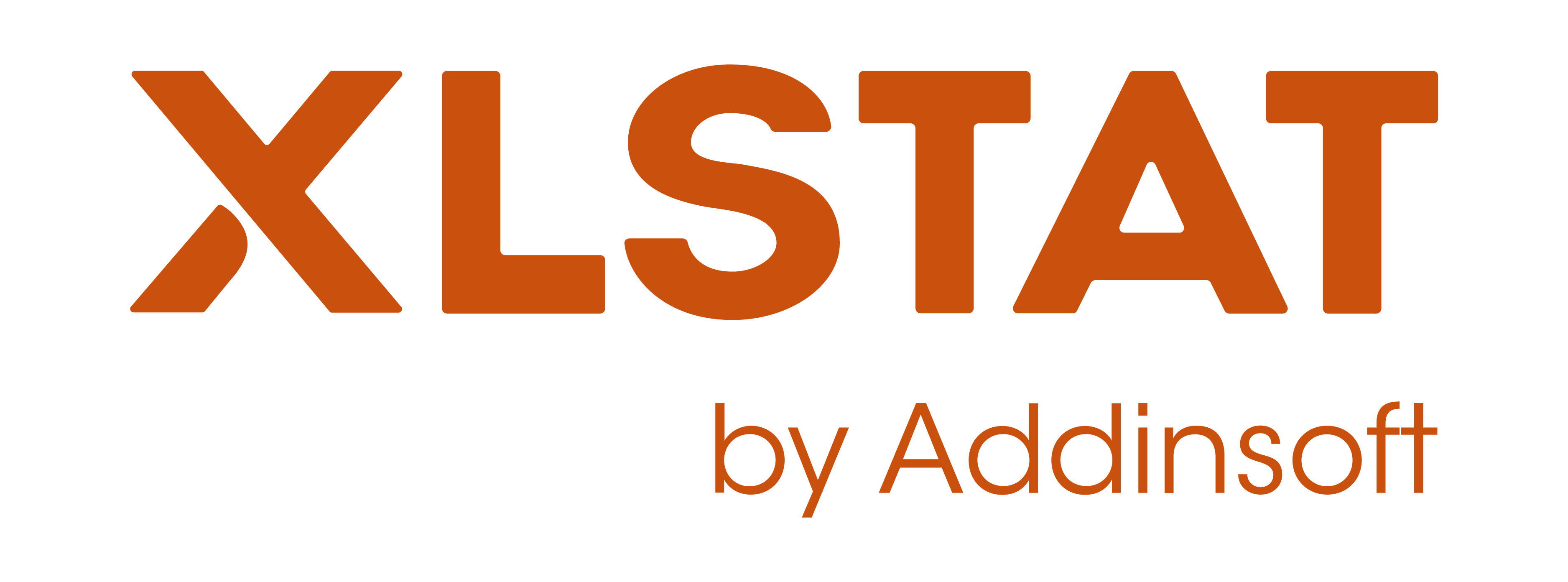What you will learn from this course
Sensory characterisation of products has traditionally been collected from trained sensory panels, there is now an increasing use of “rapid methods” of data collection that do not require training. This course covers analysis of data from both sources. We cover the key statistical analysis methods that are used to characterise and differentiate products using sensory data collected from both trained and untrained panels. The emphasis is on the purpose of the technique and interpretation of the output rather than in depth mathematical details Each module contains XLSTAT exercises with solutions detailing the interpretation of the results. We assume only very basic statistical knowledge and there is a refresher session at the beginning to remind you of these basics.
The course mainly uses XLSTAT Sensory Data Analysis and EyeOpenR software is used for panel performance. As part of the course fee you will be given a complimentary licence for EyeOpenR software for 1 year.
Topics covered:
- Analysis of Variance review, standard errors, statistical significance, multiple comparison tests
- The Mixed model for sensory data, assumptions and problem data
- Panel Performance assessment using ANOVA, the MAM model and simple multivariate methods
- Principal Component Analysis – how it works, interpretation of plots, covariance v correlation. Visualisation of sample differences, interpretation of maps, supplementary variables and confidence ellipses.
- Canonical Variates Analysis – a technique that better displays product differences v panel variation
- Rapid methods of data collection, Free Sorting Tasks and Napping, guidance in design and approaches to analysis.
- Relating sensory to instrumental/consumer liking: Simple regression modelling, variable selection. Modelling curvature, limitations.
- Relating sensory to instrumental/consumer liking 2: Partial Least Squares Regression, How it works, guidance in model building.
Course Outline
Module 1 – 9th May @ 15:00 GMT+1
Analysis of Sensory Panel Data Variable by Variable
Quick Stats Refresher: Precision of means, standard errors and confidence intervals, Least Significant Difference (LSD). Statistical significance, what it measures and what it does not measure.
Analysis of Variance of Sensory Panel Data using mixed models, multiple comparison tests. Assumptions and problem data. Fitting models with factorial sample structure. Investigation of features in the XLSTAT Product Characterisation routine and EyeOpenR.
Module 2 – 12th May @ 15:00 GMT+1
Multivariate Methods for Panel Data
Principal Component Analysis (PCA). How it works, difference between covariance and correlation based analysis. Which numerical outputs are most useful. Interpretation of graphics, supplementary variables and observations.
Canonical Variates Analysis (CVA)– graphics that show sample differences relative to panel variation. Investigation of multivariate discrimination between products, applications to panel performance.
Module 3 – 16th May @ 15:00 GMT+1
Relating Sensory data to instrumental or liking data
Multiple Factor Analysis – a method for investigating links between data tables, illustrated using sensory profile data of different modalities
Regression modelling refresher, multiple regression, variable selection, modelling curvature. Limitations
Partial Least Squares as a technique to build models to predict one block of data from another, e.g. sensory from instrumental data or liking from sensory. Graphical explanation of the technique and comparison with PCA. Key statistics and their interpretation, Strategies for model building.
Module 4 – 17th May @ 15:00 GMT+1
Further Topics
Assessing Panel Performance using ANOVA attribute by attribute. Panel and panellist repeatability, discrimination and consistency. Setting action standards. XLSTAT Panel Analysis highlights of key features. Investigating scaling effects using the MAM model in EyeOpenR software.
Rapid methods: Sorting and Napping Tasks– Objectives of the methods. Sorting tasks: design issues – sample size, number of samples, hierarchical methods, analysis using multi dimensional scaling and cluster analysis. Napping: design issues – sample size, number of samples, analysis using MFA. Overlaying descriptors. Analysis using XLSTAT.
Each Module of 3 ½ hours is available to purchase separately as a stand alone session, or book on all four modules to get the discounted price and benefit from the full Hands on Sensory experience.
When booking, please confirm which modules you wish to attend – either in the comment box of the booking form or drop us an email at askqi@qistatistics.co.uk.
Software
You will need the latest version of XLSTAT with the Sensory Data Analysis module installed on your computer. If you don’t have a licence you can download a 14-day trial version, or purchase a copy through us at a discount* (see below). A one year licence to EyeOpenR is included in the course fee.
Timing
Each module is 3 ½ hours long (please allow extra time for any connectivity issues at the start and questions at the end). Please check your time zones to make sure the timings are suitable for your country
Prices
1 Module: £395.00 ex VAT
2 Modules: £790.00 ex VAT
3 Modules: £1185.00 ex VAT
4 Modules (Complete Course): £1450.00 ex VAT
Academic Delegate discount is available.
10% reduction for multiple bookings from same organisation
XLSTAT purchase will be added to the course price only if this option is selected. The discount only applies if training is taken and only applies to the first year price. At the time of renewal the full price will be charge directly by XLSTAT.
EyeOpenR software at a discounted price for one year is already included in the course price whichever option is selected.
Please contact us for more details.
Each Module is available to purchase separately as a stand alone session, or book on all four modules to get the discounted price and benefit from the full Hands on Sensory experience. When booking, please confirm which modules you wish to attend – either in the comment box of the booking form, or drop us an email at askqi@qistatistics.co.uk.






